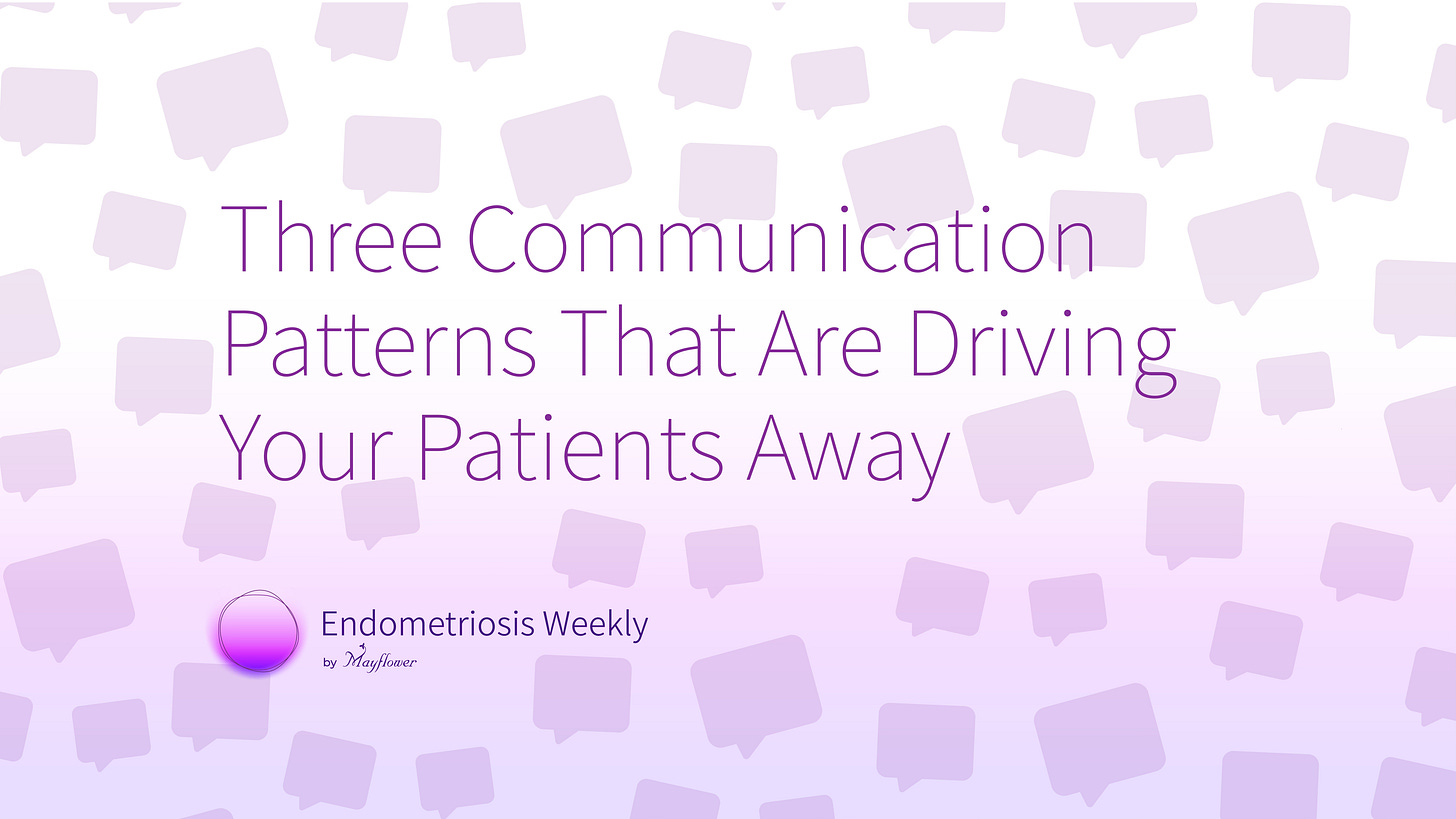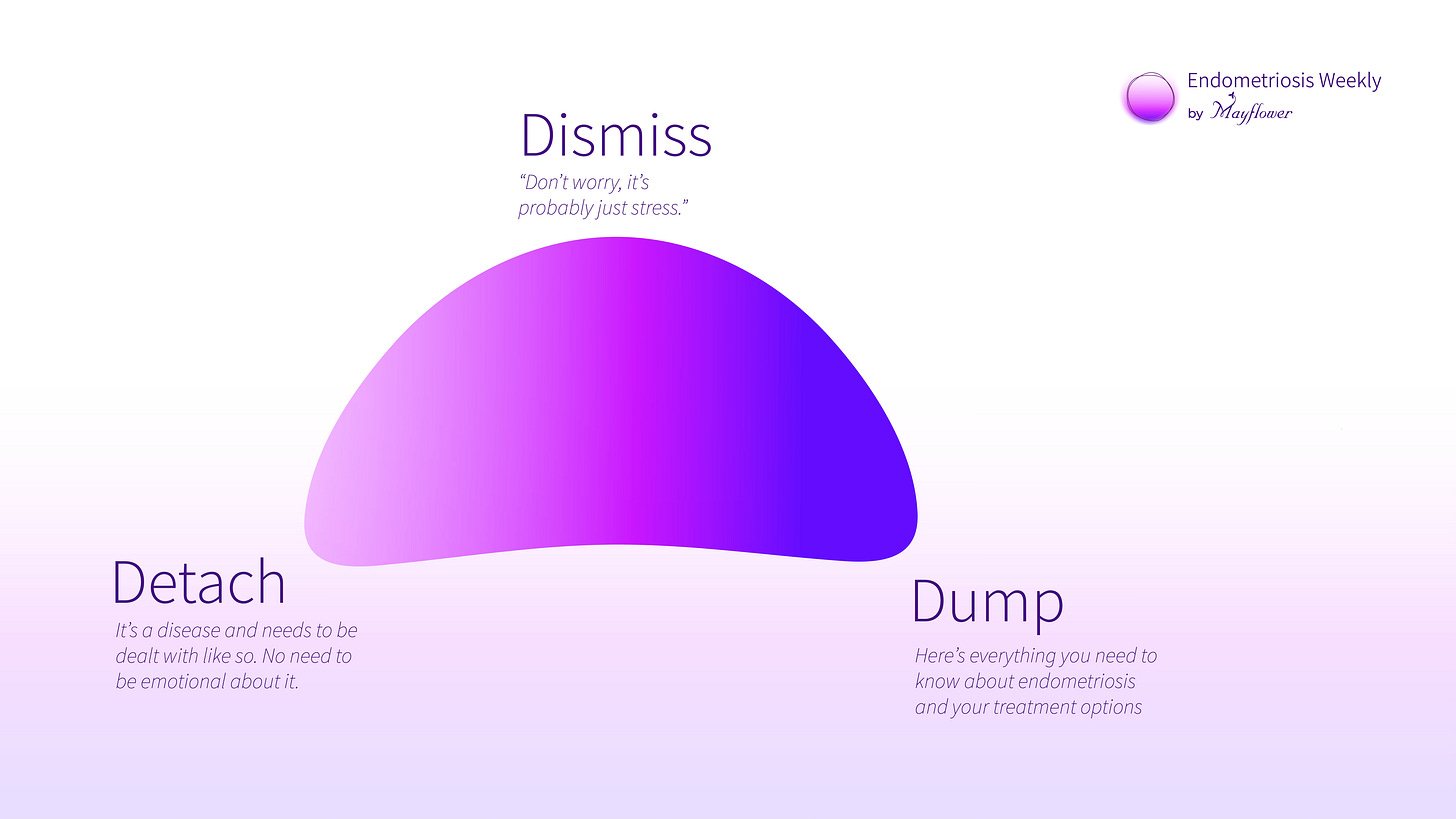Three Communication Patterns That Are Driving Your Patients Away
— and how to fix them before your next consult
Good evening Doc!
The biggest flaw amongst many of the Indian medical education system is that it does not prepare you for the business of medicine. You learn a lot about how the anatomical structures in the pelvis or the blood brain barrier and what can cross it but there is absolutely no conversation around what makes for a successful hospital.
And I’m not talking about big words like cashflow, cost of capital, and debt to asset ratios; I’m talking about the basics. What attracts patients to your practice, what do they care about the most, what aspects of healthcare are value drivers, and so on.
These matters are considered too lowly for medical professionals to discuss, and yet they become the thorn on the side of so many extremely talented doctors building their name practice.
In today’s edition, we’re breaking down communication patterns we’ve observed in doctors far too often that are driving patients away. You can perform the world’s cleanest endometriosis surgery, but if your patient doesn’t trust you, it doesn’t matter.
Every week, I meet women who walk in not just with pain, but with the baggage of five misdiagnoses, two dismissals, and a decade of being unheard.
Let’s be honest. Sometimes we get the science right — but the signals wrong.
I call these “The Three Ds of Surgeon Death”
At the surface these seem like perfectly reasonable things to say from a doctor’s perspective. But patient often hear and experience them very differently.
Let’s explore them one after the other.
1. Dismissive Reassurance
More popularly known as gaslighting. This sounds and looks a lot like you’re trying to comfort a patient. And in all probability, you are!
“Don’t worry, it’s probably just stress.”
“Everything looks fine.”
“You’re overthinking it.”
What you meant: “Let me comfort you.”
What she hears: “I’m not listening.”
Why it hurts: Chronic pain patients have already been told it’s in their head. Over and over. In fact they could have someone in their life right now who’s telling them that even this visit is unwarranted and that they just need to take some time off work. When you offer premature reassurance, you risk aligning with the very system they’re trying to escape.
What to do instead:
“I believe you. Let’s look deeper — together.”
Even if you don’t find something immediately, the act of investigating with the patient builds trust. It tells them that you’re more interested in their peace of mind and well being instead of being an agent of the method, prescribing without listening.
More importantly, when patients feel like they’ve arrived at a conclusion with you, they're more likely to feel ownership of that conclusion and put a lot more faith in it.
Believe it or not, that’s also why Ikea’s furniture model works so well.
When people make their own tables and shelves, they feel more attached to them, driving more affection for Ikea. Same principle, different location.
2. The Information Dump
Look at me! I know so much. We do this a lot. Especially in the beginning of our careers.
We walk into the room with scans, staging systems, and three treatment options in hand. Then start explaining our plan. We’re 5 minutes in before realizing that neither the patient not her accomplice has blinked once.
Why do we do this? My best guess is that we feel like sharing what we know with the patient is a sure shot way of winning them over.
But unlike our famously bad first dates, patients aren’t looking to get impressed. They’re looking to be heard, understood, diagnosed, and treated.
What we mean: “I’m showing you I’m competent.”
What she hears: “I don’t think you need to understand this.”
Why it hurts: Patients need to feel seen before they can absorb information. Clinical excellence lands only after emotional safety is established.
“People don't care how much you know until they know how much you care.”
— Theodore Roosevelt
Though popularized in leadership literature, this quote is directly applicable to medicine — especially in high-burden diseases like endometriosis, where trust precedes absorption of information. It strengthens your call to pause, assess baseline understanding, and build from there.
What to do instead:
Start with:
“Can I ask — what have you been told about endometriosis so far?”
Then build from there. This slows you down, and brings her in.
“Positive experiences were reported with doctors who showed interest in the patient’s situation, listened, and saw the human behind the disease.”
— Study on deep endometriosis treatment options (2020)
3. The Detached Professional
Then we swing completely the other way. From being over indulgent to being completely nonchalant. You keep your tone neutral. You don’t show too much empathy — maybe to avoid giving false hope, or to stay objective. She thanks you. But doesn’t book the surgery.
You were just being a good professional. Saying only what you should, only what is certain. And holding back almost entirely on everything else.
What you meant: “I’m being ethical and measured.”
What she feels: “He didn’t care.”
Why it hurts: Patients don’t just choose a surgeon. They choose a partner in the most vulnerable medical journey of their life. At this point feeling heard, being given an empathetic perspective matters to them more than you being right.
“Physicians have a tendency of overestimating their communication skills … For instance, 75% of surgeons believed they communicated satisfactorily, whereas only 21% of patients were actually satisfied.”
— Review on physician bias in doctor-patient relationships
What to do instead:
Be warm. Be precise. And name the stakes.
“This disease is affecting your quality of life. You deserve better. I’m here to help you get there — but the decision is yours.”
Of course, it’s not hard to come up with examples of doctors who do all these things and are still successful with hordes of people coming to them. Heck you could be one of those super busy docs. But I promise you those are more exception than the norm.
Giving people an opportunity to explore and detangle their disease with you might seem like a tiring process but it bears some very generous fruit.
That’s it from us this week. See you in the next one!






![Memes] Dating a Dismissive Avoidant be like: : r/ExNoContact Memes] Dating a Dismissive Avoidant be like: : r/ExNoContact](https://substackcdn.com/image/fetch/$s_!tYmG!,w_1456,c_limit,f_auto,q_auto:good,fl_progressive:steep/https%3A%2F%2Fsubstack-post-media.s3.amazonaws.com%2Fpublic%2Fimages%2F494f0e83-7b64-4829-8a8d-a0ffbcd3d432_1490x1122.png)


